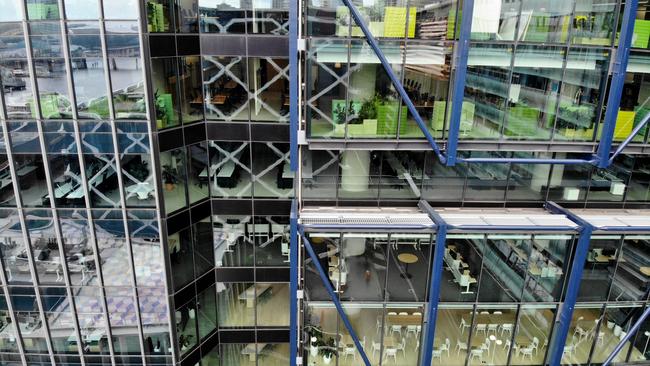Coronavirus: Bringing people back to the office is not worth the risk
The health, legal and financial costs add up to one big headache for employers.

Unfortunately, the situation in New Zealand has shown us that no Australian state or territory can declare itself virus free. Employers in these locations must assume the virus is lurking in the community.
Accordingly, the workers compensation framework these employers are bound by may keep many people working from home unless and until a vaccine arrives.
Although there are slight variations across our different systems, employers are required to provide a safe working environment. Yet in the face of this pandemic, the challenges are stupendous and the cost of failure could easily put people out of business.
Take, for example, the bewildering situation that emerged this week in a quarantine hotel in Sydney. A security guard has contracted the virus, even though there is no evidence of contact between him and a sick traveller.
Consider, too, the numbers of frontline healthcare workers who contract COVID-19, despite all of their equipment, precautions, training and knowledge.
Clearly, despite every effort, the virus is highly contagious and determined to spread. And, when this happens, employers know the local WorkCover authority will be there to investigate and maybe prosecute. Indeed, a WorkSafe investigation is occurring in Victoria with the hotel quarantine breaches under new state workplace manslaughter laws, so the risks for all those involved are high.
To illustrate the risks to employers of bringing people back to work, imagine a workplace; say, a call centre in Brisbane with 50 people in it. An employee called Allan travels on the train to work in the high-rise office. During lunch hour he wanders down to the local food court for takeaway. One day he calls in sick, and the next day notifies he is sick with COVID-19.
The workplace is closed for deep cleaning and the employer follows the instructions of the government health team. Contact tracing and genome testing occurs. In addition, a WorkCover investigation begins.
Providing the origin of the infection was found to be in the course of Allan’s employment and that his employment was a significant factor, the illness will be deemed a workplace injury.
In this case, the infection was picked up in the office, traced back to a night cleaner, who somehow passed the virus on. Nevertheless, Allan’s employer is liable for all employees and the WorkCover insurer must meet certain costs of his illness.
Allan is in his 20s but has comorbidities. He becomes very unwell with the virus and requires hospitalisation and ventilation, followed by a long period of rehabilitation. The total time off is 15 weeks. This doesn’t need to come out of sick leave, as it is a workplace injury; income for all of the 15 weeks must be paid by the insurer, as well as the medical costs.
Allan’s father contracts the virus, too, and tragically dies. Allan’s father was a successful high earner in his late 50s, on his second marriage with a younger wife, and with two young children.
In the meantime, other staff members at the office start to report illness. Of the 50, seven come down with the virus. Contact tracing and genome testing indicate the source was Allan.
Income for the time off for these seven people, plus their medical expenses, must be paid for by the employer’s insurer. One of the seven passes the virus on to her partner, who sadly dies. The couple had just given birth to twins.
Although six of the seven staff members recover quickly, one suffers a complication and a long illness, with permanent disability. It is unlikely this person will ever be able come back to work. The insurer will negotiate a lump-sum payout to compensate them for future lost earnings and care requirements.
Of course by now there are lawyers involved and claims being made of negligence. The employer’s COVIDSafe plan is criticised in common-law claims for additional compensation, over and above the time off and medical costs.
The two families who have lost loved ones are also represented by lawyers; they want compensation for the dependants of the deceased, who have suffered the shock loss of a parent and provider. These fights rage on, with lawyers writing long letters to each other, full of threats and demands. The insurer calculates the potential liability in dollar terms if they lose every single case, and notifies the employer that their insurance premium will be going up next year by a significant amount.
With our WorkCover systems generally, the employer is liable in three ways.
There is the initial time off and the medical costs for all of those with workplace injuries.
There is the risk of secondary actions, being common-law actions that can arise out of claims of negligence, and the risk of manslaughter charges in extreme situations.
Finally there is the cost of the premium increases that occur. Unlike in house and car insurance claim situations, these increases can dramatically ratchet up the premium. We can see then, how our call centre employer may well prefer to keep people working from home. Although it is not risk free, there is a much lower risk of a virus infection and claim, and no risk of the contagion spreading to other staff members.



It was no great surprise this week to hear that owners of commercial buildings want people back in the office as soon as possible. This desire is understandable, but across Australia our various state and territory-based WorkCover type systems may mean that tenants of these buildings — the employers — just cannot afford the risk.